Decompression
When arthritis occurs in the lumbar spine, as occurs with spinal stenosis, the nerves get compressed.
The surgery to remove the compression is called decompression.
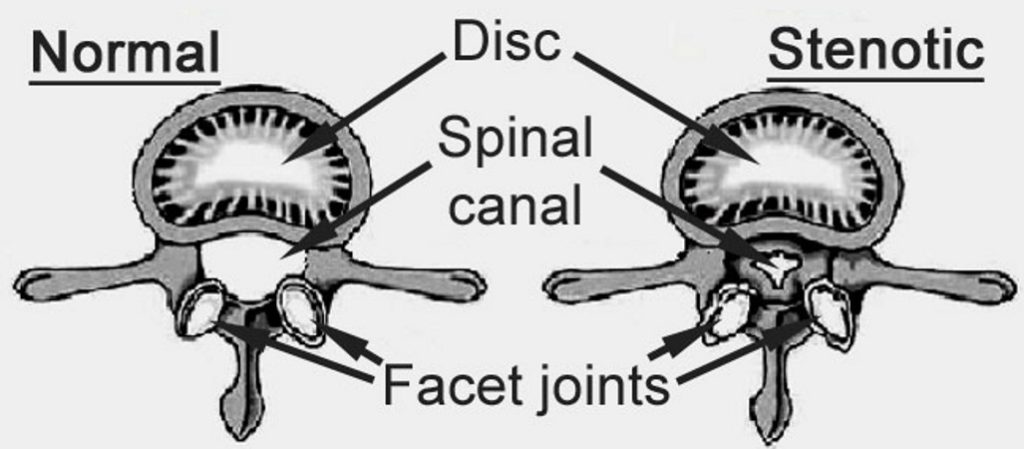
"Decompression" refers to a removal of the structures causing pressure or compression on the nerves (usually referring to either bone or ligament tissue) to make more room for the nerve structures.
"Micro" refers to use of the operating microscope. This surgery can be done either open, which is needed in more severe cases, but often can be done with minimally invasive techniques.
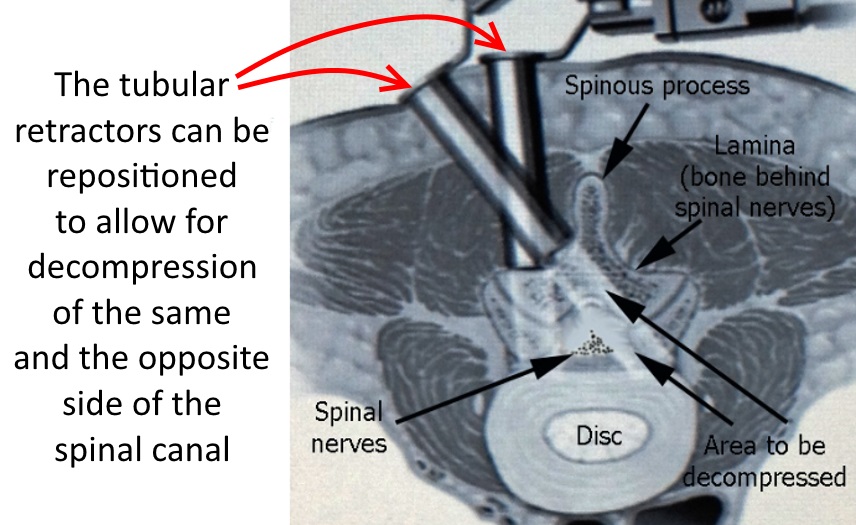
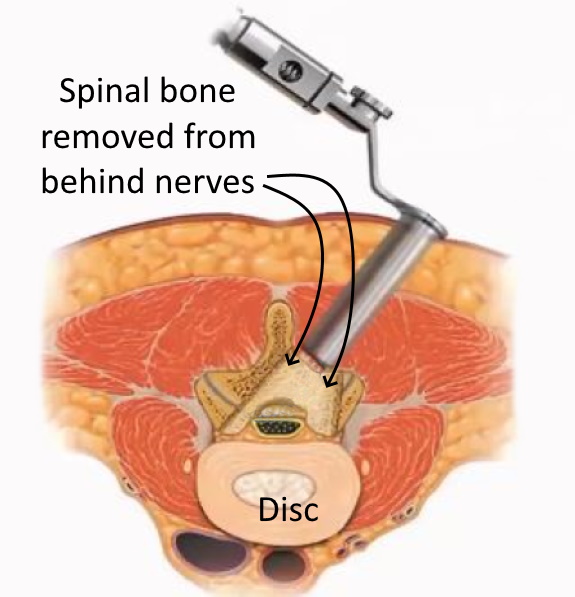
After decompression, there is more room for the spinal nerves, but still much of the bony covering on the posterior aspect (back side) of the spinal nerves remains in place.
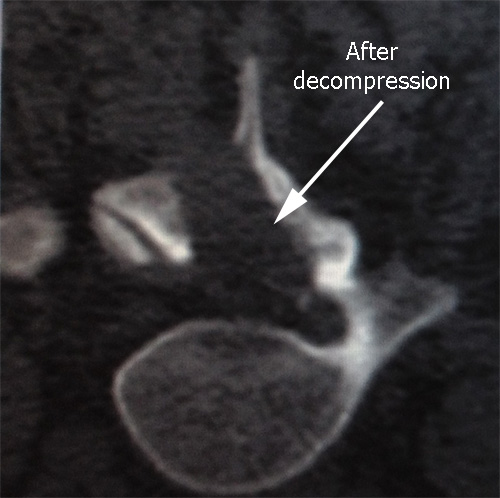

In this MRI cross section, the narrowing (stenosis) of the area for spinal nerves can be seen.
The area indicated by the tip of the arrowhead should be significantly bigger.
After a decompression, you can plainly see that there is more room for the nerves within the spinal canal.
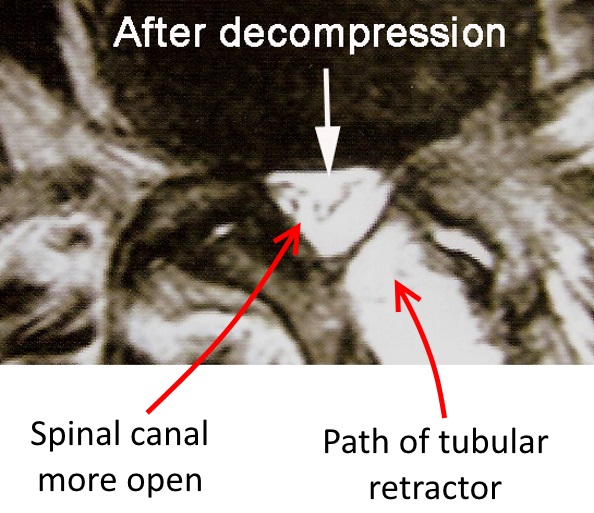
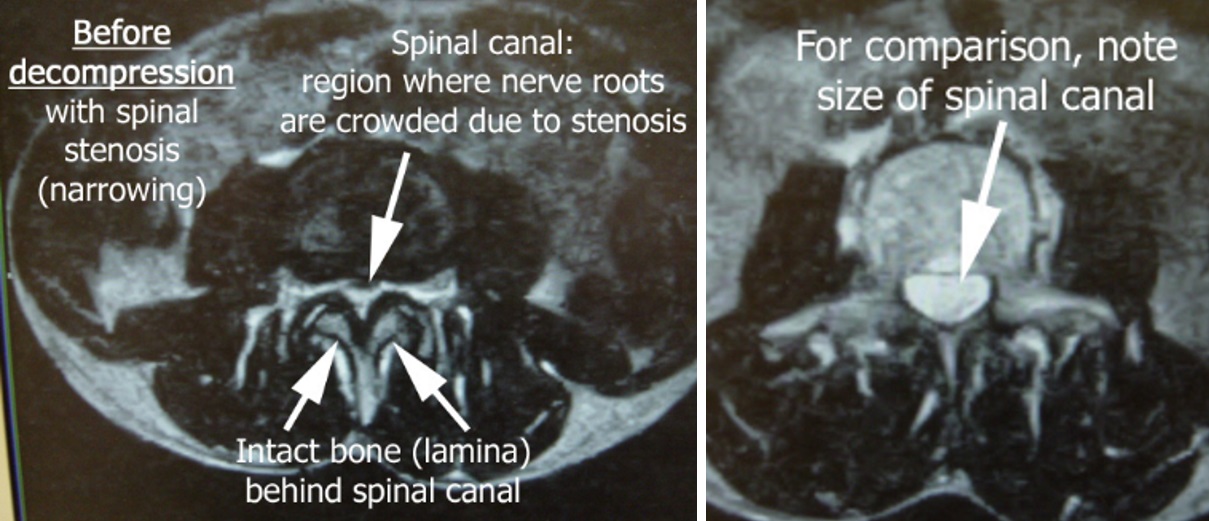

This MRI cross section, which is the same level on the same patient pictured in the pre op image above left, shows that after the decompression, not only is there more room for the nerve roots, but also individual nerve roots can be seen within the dura, now that they have more room.
